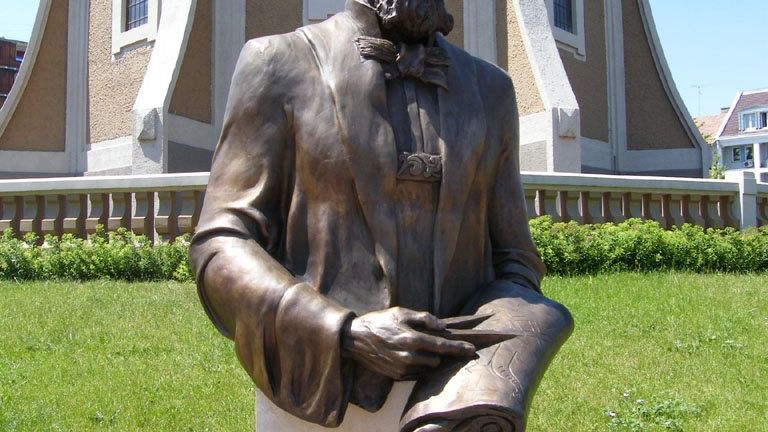
The Eiffel Hall was originally designed by János Feketeházy. Born in Vágsellye in 1842, he studied engineering at the Vienna University of Technology, later in Zurich. In 1866 took part in the constructions of the Kanal İstanbul and the bridge between Vienna and Stadlau over the River Danube as an intern. After the Austro-Hungarian Compromise, he started working for the Hungarian Royal State Railways.
As a specialist in metal structures he designed such masterpieces as the vehicular bridge of Szeged (1883), the railway bridge over the River Tisza in Szolnok (1888), Elizabeth Bridge of Komárom (1892), Maria-Valeria Bridge which connects Esztergom and Párkány (1894), and the Franz Joseph Bridge (today: Liberty) of Budapest (1873-76). His most significant works are the roofing of the platform hall of the Keleti Railway Station, the Chief Customs Palace (today: Corvinus University) and the Opera House.
Ironically, his most beautiful works (the Tisza Bridge of Szeged, and the Eiffel Hall) were attributed to Eiffel. In 1933, the author Ferenc Móra started crediting him for his accomplishments in the public and correcting all the misunderstandings.
Now that the Hungarian State Opera takes over the old locomotive workshop, it is time to mark the name of the true architect: János Feketeházy. Especially because he had one of the main roles in the roofing of the Opera House.
János Feketeházy's career in the Opera was emblematic. He is not listed in any documentation, although most of the roofing was designed by him, including the roof above the stage, the ceiling of the auditorium and the cord attic's metal structure. In 1884, Miklós Ybl's architectural bureau could not find a more suitable person with a better reference.
His name and work will be remembered by having a hall named after him at the Eiffel Art Studios.